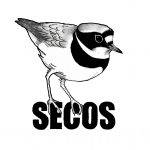In 2019 we took part in a BTO national survey named ‘Seabirds Count 2019’ and published a report detailing our results in the Crewe area. This can be viewed at Seabird Survey.
For the 2019 survey we spent a lot of time tramping the pavements on the Industrial Estate over the whole of the breeding season. It has not been possible to arrange such a detailed survey this year but we have made casual observations and recorded them. We have also been fortunate to be given access to the roof of Rail House in Gresty Road, which gives a much better overall view than we have had previously.
It was obvious just from casual observations that the original colony has spread to new areas and also increased in numbers. Although we could not match the detailed records of the previous survey it was possible to compare numbers for a few sites, and these are given in the table below. Lesser Black-backed Gull continues to be the commonest species although there are now significant numbers of Herring Gull. To enable a comparison the numbers for both species have been combined to give a total:
Original Weston Road Industrial Estate site
| Site name | Total adults in 2019 | Total adults in 2022 |
| B&Q | 59 | 154 / 60# |
| Storage King | 8 | 18 |
| Swansway | 6 | 10 |
| Royal Mail MECX | 2 | 2 |
| Railway Station buildings | 0 | 8 |
# 154 on 5th May and 60 on 18th July, by which time all birds were free flying and
moving about
New Sites not noted in 2019; between Macon Way and Christ Church
| Site name | Total adults in 2019 | Total adults in 2022 |
| Dunelm, Forge Street | 0 | 12 |
| Radius, Herald Drive | 0 | 4 |
| By Mannin House, Macon Way | 0 | 6 |
young were noted at all three sites.
In the 2019 survey we recorded a colony in the Bombardier Railway works in West Street but concluded that the colony became extinct due to extensive building roof repairs during 2015 and the development of a large housing complex adjacent to the site. In the spring of 2022 small numbers (up to ten) were noted flying over and around Bentley Motors in West Street as if associated with the site. No further observations were possible to determine whether a site has been established there.
John Thompson and Colin Lythgoe
